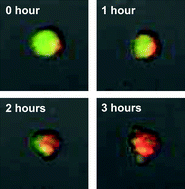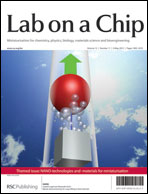Acoustofluidics 12: Biocompatibility and cell viability in microfluidic acoustic resonators
Abstract
Manipulation of biological cells by acoustic radiation forces is often motivated by its improved biocompatibility relative to alternative available methods. On the other hand, it is well known that acoustic exposure is capable of causing damage to tissue or cells, primarily due to heating or cavitation effects. Therefore, it is important to define safety guidelines for the design and operation of the utilized devices. This tutorial discusses the biocompatibility of devices designed for acoustic manipulation of mammalian cells, and different methods for quantifying the cell viability in such devices.


 Please wait while we load your content...
Please wait while we load your content...